Sima is not the only one who missed the era change. 😛
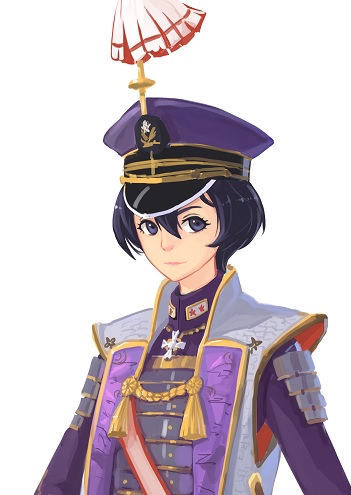

Hi everyone. This is Sune. Morgane is overworked again. As such I will answer the questions that have come up that mostly fall under my specialty.
If Japanese shipgirls aren’t kami do they see themselves as kami?
Most do not. One does but she should not be taken seriously.
Where are the other Japanese shipgirls?
Pacific’s focus is on American shipgirls and their friends. Japanese shipgirls only appear when they make sense in Pacific’s overall storyline or have important roles to play.

I am too lazy to retype all of that.
Thank you for your comments.
The main volume Pacific character design process moves roughly in chronological order. We are somewhere around Midway and Santa Cruz right now. The contributions you mention by the British Pacific Fleet occurs in 1944. This is well after America established naval dominance through systematic attrition, superior shipbuilding, capable development of novel naval battle tactics, and an overall strategic vision that we lacked.
Personally I have no impression whatsoever of Royal Navy capabilities. In Japan among naval enthusiasts they are famous for suffering crippling defeats at the hands of the Imperial Navy in 1941 and 1942. In fact from my own (Japanese) sources it is understood that the British only joined in the Pacific War for fear that America would free up their former territories and colonies. In any case a general sentiment in Japan is that we lost (or in the words of our prime minister “the war ended”) to America and not the Allies.
If the contributions of the British are very significant then unfortunately I do not know about it. We are happy to learn more about it but the matters of the Royal Navy rarely come up within team discussions. Without knowing anything about the Royal Navy we obviously cannot create shipgirls that would be a good and faithful depiction of the actual history.
Furthermore. There is no one on the Pacific team who works on the Royal Navy. Not since our British person retired years ago. Without someone to advocate for British characters it is unfortunate but inevitable that they get pushed back further and further on the illustration schedule.
By the way Morgane is an anglophile who loves many things that are British. She has a degree in Arthurian and Celtic legends. She is also very knowledgeable in the roles that were played by the Royal Air Force in the Battle of Britain and the European theater. However Morgane is busy working on everything else. As such the British shipgirls that she has created are relegated to background status and once again do not get drawn.
The reason why the Soviet characters get drawn first is that there are people who are actively working on them. Furthermore given Pacific’s world building the USSR remains a dominant power. Without anyone working on the resurgent British Empire it is natural that foreign shipgirl art tend to prioritize those that the team are interested in.
We are very sorry.
——-
And now actual content.
I want to do a Fireside Chat too. Should I title it that?
Despite my reputation for being the one who provides fanservice I also provide significant cultural elements into all of our shipgirl designs. For the Japanese shipgirls that come into Pacific I want to make their “Japanese-ness” explicit. In other words rather than drawing from contemporary Japanese culture such as the high school uniform or the school swimsuit I draw almost all of my inspiration from traditional and ancient Japanese culture.
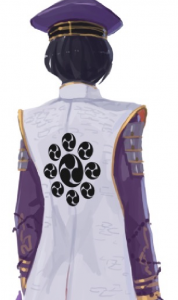
There are certain character attributes that are immediately recognizable by those familiar with the references. As such my Japanese shipgirl designs draw liberally from all sources. For instance below.
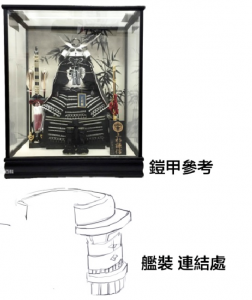
The armor pattern of this particular shipgirl is not simply that of the approximate shape to what her turret mounts would be. Given her namesake’s region I thought it prudent to provide Sima with reference images of an iconic individual from said region. As such you can see that specific armor pattern weaved into her clothing design.
A great deal of the Japanese shipgirl’s personality comes out of a composite of their histories, crew, historical performance and the like. However much like how American shipgirls in Pacific exemplifies certain aspects of America the Japanese shipgirls do so as well. For example because of its association with Japanese faith and primitive religion Pacific’s Kumano is a reserved and calm individual. She is not very similar to her KanColle counterpart in that regard who makes funny howling cat noises during attack. In the example above the shipgirl is heavily associated with winter due to the magnificence of the wintery frost that appears every year.
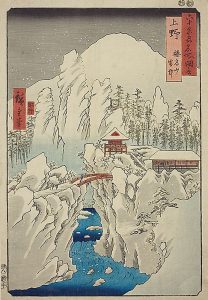
An example of this is preserved in art as you can see above. With this theme her personality writes itself. Someone who is outwardly cold but like the joys of winter is warm inside. This aspect symbolizes the part of Japan in which she is named after and it superimposes over any “ship” part that is her.
Afterwards it is my honorable duty to make the shipgirls sexy. I have never understood the prudishness that some of our western readers exhibit.
Seriously. They are shipgirls. GIRLS. DO I NEED TO SAY ANYTHING ELSE.
ALSO I’M BORED NOW.
SEE YOU NEXT TIME.
STEC Archives, Print Document Division
Curator signature: New York
Format: Textual Record
Object: Personal communications of Admiral (ret.)
Original Language: Japanese
Location (if known): Koyu County, Miyazaki prefecture
Time (if known): Written in 1966
My dearest daughter,
We are not ready. The plan the General Headquarters want to implement is absolute lunacy. Japan has yet to recover from the devastation twenty years ago. We were driven to bankruptcy and ruin funding the Great East-Asian War. To do so again and try is madness, yet no one speaks out.
It was necessary for them to silence me, my daughter. Please understand this. As much as we disagree, they, too, want what is best for our country. They simply could not risk having me speak or leak our plans to the Americans, and in doing so I tell you, they will cause another war – a war that we could not win at the height of our strength, much less now, a shadow of our former self.
I lead the study that gauged our nation’s preparedness in case of total war. It took four months to collect the data; three days to analyze it all.
Food alone should be concern enough. Production of critical foodstuffs fall short of expected and far short of what would be sufficient. Yields have fallen to pre-war levels. Production is stagnant and trending downward. Less than ten percent of the people have adequate levels of stored food. thirty-five percent has a liter or less of stored rice. The rest have no stored food at all.
The people are starving. Ask yourself how can we implement further rationing when food is already rationed. Kind as it is for the Americans to help, these monsters come from the seas! What will happen when they choke off Japan’s link to the rest of the world? Will America send convoy after convoy to their death so a former enemy could be fed? Suppose there are honorable men enough to do this, and I do believe there are, do you honestly think they can sustain their effort for long? They attack globally after all.
Food is the first concern, energy the second. The corporations has been falsifying their reports. Power production rates at only thirty or less of reported levels in eighteen prefectures, fifty percent in twenty-seven, eighty percent in three. Only Niigata, Osaka, and Wakayama are adequate, and the status of current infrastructure requires immediate attention. Fuel reserves are low to non-existent. At this rate we will ran out of oil before a single warship could be built.
Our currency reserves are dry. Even if our coffers are full, rice and oil are not all that we need to purchase. Where are we to find the raw reserves of steel, rubber, aluminum, lead, tungsten, chromium, and countless other materials? From whom can we purchase fertilizer or textiles or antibiotics?
The efforts to reach self-reliance has failed. Yet we now clamor for additional weapons of war! Can you eat an aeroplane or a submarine or a missile? Can you burn a tank for warmth or wear a semi-automatic rifle?
I will not stand for this madness. Not any longer. This old man has lived a long life. The spirit of the navy is such that we are victorious or we die trying our best. I will deliver this report – to His Majesty if necessary.
Note: this letter is a part of personal collection 440619200619. A number of fragmentary pages are grouped with the letter, strongly suggesting that this was the final written missive within the collection.
Sune here. 😀 I think before we start on this topic I should clarify some basic concepts. It seems to me that many readers use words without truly understanding what they mean.
To begin, the idea of “decisive battle.” Midway was supposed to be a Decisive Battle. However many of you seem to have the mistaken idea that the Japanese fleet simply sat around and waited for a big battle to come. This is not true. As early as 1934 Japan was already planning on a war and a victory with the United States.
No. The “decisive battle” doctrine calls for a systematic approach of attrition against the Americans. Japanese submarine doctrine plays into this, where they were supposed to pick off major American warships one by one. Land-based aircraft were supposed to do the same. Attacks carried out by destroyers lead by cruisers were another facet. The plan calls for the detachment of lighter fleet elements to attack the enemy at night preferably via surprise.
After all of this then. the capital ships would move in and deliver a strike of decapitation. Here was where the Spirit of Japan would bring the edge. The idea is that the martial spirit of Japan would triumph over her enemies just as it has countless other times in recent Japanese history.
On June 4th, Japan had every advantage. The Americans had no other capital ships in the Pacific. Nimitz had only three carrier groups. The Essex would not come for another year. Furthermore Hitler was giving the Allies a sound thrashing in Europe. America had a Germany First policy that would limit the resources possible to fight Japan with.
From the Japanese side we have known for a long time that we cannot hope to get into a war with America and make the war long. Critical action was necessary. It was imperative that we get America into a separate peace deal so we can resolve the incidents in China.
But, in June of 1942, the Japanese Empire was in an excellent position. We have Malaya, Singapore, Borneo, Java, Sumatra. We took the Philippines from the Americans. We have Thailand. We are advancing towards India. Throughout all this we only lost a few destroyers and submarines.
With such overwhelming advantage it is not hard to see why the Midway operation went through. Yamamoto needed to deliver the blow and remove the threat of the US carrier forces. Doolittle was something that the Empire remembers well and will not permit a second time. Furthermore if the American carriers were destroyed then Japanese army operations can proceed unhindered in the Pacific. A victory would buy Japan time. It was necessary.
The situation was good. The British fled the East Indian Ocean. We knew for certain that we had destroyed at least one if not two carriers at Coral Sea. The Americans had at most maybe two carriers left possibly three. Even without Zuikaku and Shokaku we had four veteran carriers. The odds were very good.
How in the world then did Japan lose this battle? Well let us consider the following.
Why did Yamamoto choose to split his fleet into four separate task forces and order such an insanely complicated battle plan?
Why did Yamamoto go to sea where he could not communicate by radio? Why did he not choose to stay on shore?
Why did no one at Headquarters contend Yamamoto’s unrealistic plan?
Who was going to take care of logistics for the invasion force?
Why were we attacking a place incapable of being supported by our land-based air forces?
Why would we intentionally place ourselves under threat of enemy land-based air forces?
Why not attack the South Pacific such as Fiji or Samoa?
Given the damage suffered at the hands of SBDs at Coral Sea, why not add more fighters and improve anti-air capabilities?
Why was Operation K (a plan to recon Pearl Harbor to confirm the presence of US carriers) cancelled?
Many analysis of the Battle of Midway focuses on the tactics of the battle. I know this post sound like NAGUMO DID NOTHING WRONG: THE POST. However it is necessary to consider many of the perspectives propagated and popularized by KanColle and ask yourself if it is true.
Tamon-maru (Yamaguchi) is often heralded as the greatest naval commander of Midway. “If only they had listened to Tamon-maru, then Midway would have been won.”
Really?
Why did Tamon-maru suggest to Nagumo to immediately launch an attack while Nagumo was deliberating over whether or not CAP and Tomonaga’s squadron needs to be recovered? Does he not know what happens to unprotected dive bombers? Did he not see how badly we annihilated the incoming American bombers and torpedo planes just moments prior to this?
Why would it be wrong for Nagumo to not want to throw away the lives his pilots on what might be a purposeless attack?
Why was the Hiryu careening towards TF 16 after the Fateful Five Minutes? Was it really a smart thing to do if you don’t know how many enemy carriers are there in the first place?
(These are carriers. Getting closer to the enemy doesn’t make an attack stronger. It increases risks of the Hiryu being found. As a matter of fact if you look up any map of the Midway battle you will find that the Hiryu took a pretty funny trip.
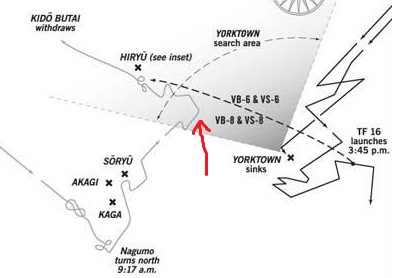
See that squiggle? That was when Hiryu finally turned around. )
Why did Tamon-maru consider the Hiryu too badly damaged by fire to salvage when Yamamoto found her the next day still afloat?
As it stands, Hiryu propulsion was largely undamaged after the Enterprise attack, and her crewmen fought to save the ship all night. The US picked up 39 additional crewmen from the Hiryu days later who never received the order to abandon ship.
The Hiryu was torpedoed at 5:10. She didn’t sink until 9:10, nearly four hours later. Even planes from Hoshou saw survivors aboard the ship. Where was Tamon-maru?
Why did he not choose to live on and pass his expertise? Japan could use veteran commanders, couldn’t she?
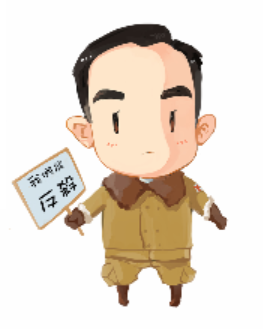
It’s easy to try to distill these historical events down to IF ONLY WE DID X, WE WOULD WIN. The truth is hardly so simple. If you examine deeply enough everyone can be attributed blame. Some are perhaps more deserving of blame than others.
Some say Midway was lost at a strategic level. That perhaps it was something we never should have gone in at. I do not disagree. But.
To me Midway was lost for a simple reason.
We might not have thought the Americans were a superior force prior to Midway but they were the better force and they proved it at Midway. The Americans fought better than the Japanese, made less mistakes, and made more correct decisions.
If they did not the Pacific War would have turned out very differently.
The men did their best.
Nagumo did his best.
The best did not deliver a victory. It was as simple as that.